 W
WThe Hajj is an annual Islamic pilgrimage to Mecca, Saudi Arabia, the holiest city for Muslims. Hajj is a mandatory religious duty for Muslims that must be carried out at least once in their lifetime by all adult Muslims who are physically and financially capable of undertaking the journey, and of supporting their family during their absence from home.
 W
WAl-Fath is the 48th chapter (surah) of the Qur'an with 29 verses (ayat). The surah was revealed in Madinah in the sixth year of the Hijrah, on the occasion of the Treaty of Hudaybiyyah between the Muslim city-state of Madinah and Makkan polytheists. It mentions this victory, then criticizes the attitudes of the hypocrites, continues with further promises to the Muslims, and ends by mentioning certain important virtues of the Muslim community.
 W
WAl-Ḥajj is the 22nd chapter (sūrah) of the Quran with 78 verses (āyāt). This surah takes its name from the 27th verse.
 W
WSafa and Marwa are two small hills, connected to the larger Abu Qubais and Qaiqan mountains, respectively, in Mecca, Saudi Arabia, now made part of the Masjid al-Haram. Muslims travel back and forth between them seven times in what is known as Sa'ee ritual pilgrimages of Ḥajj and Umrah.
 W
WAmir al-hajj was the position and title given to the commander of the annual Hajj pilgrim caravan by successive Muslim empires, from the 7th century until the 20th century. Since the Abbasid period, there were two main caravans, departing from Damascus and Cairo. Each of the two caravans was annually assigned an amir al-hajj. The main duties entrusted to an amir al-hajj were securing funds and provisions for the caravan, and protecting it along the desert route to the Muslim holy cities of Mecca and Medina in the Hejaz.
 W
WThe Black Stone is a rock set into the eastern corner of the Kaaba, the ancient building in the center of the Grand Mosque in Mecca, Saudi Arabia. It is revered by Muslims as an Islamic relic which, according to Muslim tradition, dates back to the time of Adam and Eve.
 W
WDisavowal of Polytheists in Hajj is an Islamic religious/political tradition which is yearly performed at the time of Hajj. Disavowal of polytheists is a Qur'anic term or tradition which is applied to "disgust to polytheists and the enemies of Allah/His apostle".; it likewise means: "Announcement of Bara'ah (disgust/aversion) from all Taghuts and arrogance powers".
 W
WEid al-Adha is the latter of the two official holidays celebrated within Islam. It honors the willingness of Ibrahim (Abraham) to sacrifice his son Ismael as an act of obedience to God's command. Before Ibrahim could sacrifice his son, however, God provided a ram to sacrifice instead. In commemoration of this intervention, animals are sacrificed ritually. One third of their meat is consumed by the family offering the sacrifice, while the rest is distributed to the poor and needy. Sweets and gifts are given, and extended family are typically visited and welcomed. The day is also sometimes called Big Eid or the Greater Eid.
 W
WA Hajj passport was a special passport used only for entry into Saudi Arabia for the purpose of performing hajj. This passport is no longer used, as Saudi Authorities requires ordinary passport since 2009.
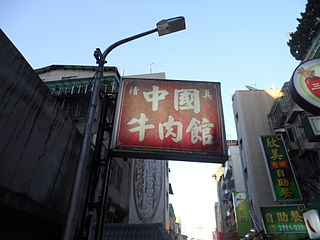 W
WHalal tourism is a subcategory of tourism which is geared towards Muslim families who abide by rules of Islam. Also generally known as Halal travel or halal friendly tourism. The hotels in such destinations do not serve alcohol and have separate swimming pools and spa facilities for men and women, serve only halal foods, no pork included in menu, have prayer facilities in room and common hall. Travel agents while designing travel packages for this follows guidelines of halal. Malaysia, Turkey and many more countries are trying to attract Muslim tourists from all over the world offering facilities in accordance with the religious beliefs of Muslim tourists. Currently, there exist no internationally recognized standards on Halal tourism.
 W
WThe hajj is a pilgrimage to Mecca performed by millions of Muslims every year, coming from all over the Muslim world. Its history goes back many centuries. The present pattern of the Islamic Hajj was established by Islamic prophet Muhammad, around 632 CE, who reformed the existing pilgrimage tradition of the pagan Arabs. According to Islamic tradition, the hajj dates from thousands of years earlier, from when Abraham, upon God's command, built the Kaaba. This cubic building is considered the most holy site in Islam and the rituals of the hajj include walking repeatedly around it.
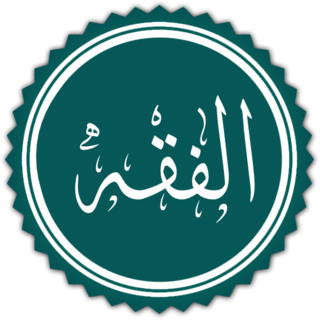 W
WIhram is, in Islam, a sacred state which a Muslim must enter in order to perform the major pilgrimage (Ḥajj) or the minor pilgrimage (ʿUmrah). A pilgrim must enter into this state before crossing the pilgrimage boundary, known as Mīqāt, by performing the cleansing rituals and wearing the prescribed attire.
 W
WIhram clothing includes men's and women's garments worn by Muslim people while in a state of Iḥrām, during either of the Islamic pilgrimages, Ḥajj and/or ʿUmrah. The main objective is to avoid attracting attention. Men's garments often consist of two white unhemmed sheets and are universal in appearance. The top is draped over the torso, and the bottom is secured by a belt; plus a pair of sandals. Women's clothing, however, varies considerably and reflects regional as well as religious influences, but they often do not wear special clothing or cover their faces.
 W
WThe COVID-19 pandemic affected the 2020 Hajj (pilgrimage), which is the fifth pillar of the Five Pillars of Islam, where millions of Muslims from around the world visit Mecca and Medina every year during Hajj season for a week. Over 2,400,000 pilgrims attended Hajj in 2019. Due to the highly contagious nature of COVID-19 in crowded places, various international travel restrictions, and social distancing recommendations, the Ministry of Hajj and Umrah advised Muslims to postpone their pilgrimage until the pandemic was mitigated. However, in June 2020, the Ministry opened up Hajj to people of all nationalities residing in Saudi Arabia, with foreigners still banned from attending to ensure pilgrims' safety and prevent the transmission of COVID-19.
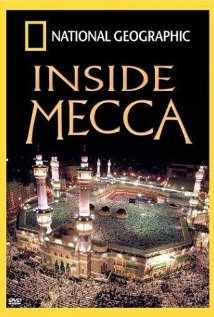 W
WInside Mecca is a 2003 National Geographic documentary film by Anisa Mehdi that offers an intimate documentation of the annual pilgrimage to Mecca. Aside from providing insight regarding the universal principles of Islam, this production emphasizes the historical significance of Mecca to both the Muslim and non-Muslim population. Often constituting a journey of epic proportions, it follows several pilgrims throughout their trip, and highlight their physical and mental preparation, the strain induced by the journey itself, and the spiritual ecstasy experienced upon arrival. The film is narrated by American voice actor Keith David.
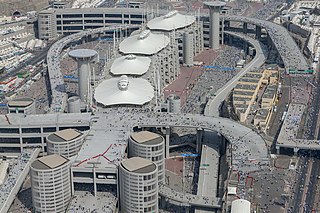 W
WThe Jamaraat Bridge is a pedestrian bridge in Mina, Saudi Arabia, near Makkah used by Muslims during the Hajj ritual Stoning of the Devil. The purpose of the bridge is to enable pilgrims to throw stones at the three jamrah pillars either from the ground level or from the bridge. Jamaraat is the plural of jamraah, the Arabic term for each of the pillars involved in the stoning ritual. It literally means a small piece of stone or a pebble.
 W
WThe Kaaba, also spelled Ka'bah or Kabah, sometimes referred to as al-Kaʿbah al-Musharrafah, is a building at the center of Islam's most important mosque, the Masjid al-Haram in Mecca, Saudi Arabia. It is the most sacred site in Islam. It is considered by Muslims to be the Bayt Allah and is the qibla for Muslims around the world when performing salah.
 W
WThe Khalili Collection of the Hajj and the Arts of Pilgrimage is a private collection of around 4,500 items relating to the Hajj, the pilgrimage to the holy city of Mecca which is a religious duty in Islam. It is one of eight collections assembled, conserved, published and exhibited by the British-Iranian scholar, collector and philanthropist Nasser Khalili; each collection is considered among the most important in its field. The collection's 300 textiles include embroidered curtains from the Kaaba, the Station of Abraham, the Mosque of the Prophet Muhammad and other holy sites, as well as textiles that would have formed part of pilgrimage caravans from Egypt or Syria. It also has illuminated manuscripts depicting the practice and folklore of the Hajj as well as photographs, art pieces, and commemorative objects relating to the Hajj and the holy sites of Mecca and Medina.
 W
WA mahmal is a ceremonial passenger-less litter that was carried on a camel among caravans of pilgrims on the Hajj, the pilgrimage to Mecca which is a sacred duty in Islam. It symbolised the political power of the sultans who sent it, demonstrating their custody of Islam's holy sites. Each mahmal had an intricately embroidered textile cover, or kiswah. The tradition dates back at least to the 13th century and ended in the mid-20th. There are many descriptions and photographs of mahmals from 19th century observers of the Hajj.
 W
WMina, also transliterated as Muna, and commonly known as the "City of Tents" is a valley and neighborhood located in the Masha'er district in the Makkah Province of Saudi Arabia, 8 kilometres southeast of the city of Mecca, covering an area of approximately 20 km2 (7.7 sq mi). Mina incorporates the tents, the Jamarat area, and the slaughterhouses just outside the tent city.
 W
WMount Arafat, and by its other Arabic name, Jabal ar-Raḥmah, is a granodiorite hill about 20 km (12 mi) southeast of Mecca, in the province of the same name in Saudi Arabia. The mountain is approximately 70 m (230 ft) in height, with its highest point sitting at an elevation of 454 metres.
 W
WMecca, officially Makkah al-Mukarramah and commonly shortened to Makkah, is a city and administrative center of the Mecca Province of Saudi Arabia, and the holiest city in Islam. The city is 70 km (43 mi) inland from Jeddah on the Red Sea, in a narrow valley 277 m (909 ft) above sea level. Its last recorded population was 1,578,722 in 2015. The estimated metro population in 2020 is 2.042 million, making it the third-most populated city in Saudi Arabia after Riyadh and Jeddah. Pilgrims more than triple this number every year during the Ḥajj pilgrimage, observed in the twelfth Hijri month of Dhūl-Ḥijjah.
 W
WMina, also transliterated as Muna, and commonly known as the "City of Tents" is a valley and neighborhood located in the Masha'er district in the Makkah Province of Saudi Arabia, 8 kilometres southeast of the city of Mecca, covering an area of approximately 20 km2 (7.7 sq mi). Mina incorporates the tents, the Jamarat area, and the slaughterhouses just outside the tent city.
 W
WPast and current governments of Afghanistan have included a minister of Haj and Religious Affairs Pashto: د ارشاد، حج او اوقافو وزارت, in their Cabinet. The Current Acting Minister of Haj and Religious Affairs is Noor Mohammad Saqib.
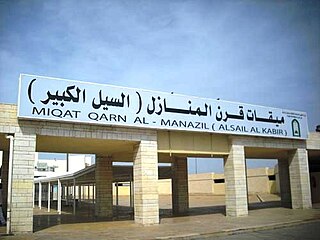 W
WThe miqat is the principal boundary at which Muslim pilgrims intending to perform the Ḥajj or Umrah pilgrimages must be enter the state of iḥrām , a state of consecration in which certain permitted activities are made prohibited.
 W
WThe Mīqāt Dhu al-Ḥulayfah, also known as Masjid ash-Shajarah or Masjid Dhu al-Hulayfah, is a mosque in Abyār ʿAlī, Medina, west of Wadi al-'Aqiq, believed by Muslims to be the location where the final Islamic prophet, Muhammad, entered the state of ihram before performing 'Umrah, after the Treaty of Hudaybiyyah. The mosque is located 7 km (4.3 mi) SW of the Al-Masjid an-Nabawi and was defined by Muhammad as the miqat for those willing to perform the Hajj or Umrah pilgrimages from Medina. It is the second-largest miqat mosque after the Miqat Qarn al-Manazil in As-Sayl al-Kabir.
 W
WMount Arafat, and by its other Arabic name, Jabal ar-Raḥmah, is a granodiorite hill about 20 km (12 mi) southeast of Mecca, in the province of the same name in Saudi Arabia. The mountain is approximately 70 m (230 ft) in height, with its highest point sitting at an elevation of 454 metres.
 W
WThe "mut'ah of Hajj" is the relaxation of the ihram between the Umrah and Hajj, including its dress code and various prohibitions.
 W
WMuzdalifah is an open and level area near Mecca in the Hejazi region of Saudi Arabia that is associated with the Ḥajj ("Pilgrimage"). It lies just southeast of Mina, on the route between Mina and Arafat.
 W
WRabigh is a city and governorate in the Province of Makkah of the Kingdom of Saudi Arabia, situated on the coast of the Red Sea, around 208 km (129 mi) northwest of Mecca in the historic Hejazi region. The city had an estimated population of 180,352 in 2014 and is situated at an elevation of 13 m (43 ft) above sea level, close to the border with the Madinah Province. The city dates back to the era before the advent of Islam in the 7th century C.E., and up to the 17th century, was known as Al-Juhfah, or Al-Johfah.
 W
WMuhammad Sadiq Bey was an Egyptian army engineer and surveyor who served as treasurer of the Hajj pilgrim caravan. As a photographer and author, he documented the holy sites of Islam at Mecca and Medina, taking the first ever photographs in what is now Saudi Arabia.
 W
WThe Stoning of the Devil is part of the annual Islamic Hajj pilgrimage to the holy city of Mecca in Saudi Arabia. During the ritual, Muslim pilgrims throw pebbles at three walls, called jamarāt, in the city of Mina just east of Mecca. It is one of a series of ritual acts that must be performed in the Hajj. It is a symbolic reenactment of Ibrahim's hajj, where he stoned three pillars representing the temptation to disobey God.
 W
WThe miqat is the principal boundary at which Muslim pilgrims intending to perform the Ḥajj or Umrah pilgrimages must be enter the state of iḥrām , a state of consecration in which certain permitted activities are made prohibited.
 W
WThe Zamzam Well is a well located within the Masjid al-Haram in Mecca, Saudi Arabia. It is 20 m (66 ft) east of the Kaaba, the holiest place in Islam. According to Islam, the well is a miraculously generated source of water from Allah, which sprang spontaneously thousands of years ago when Ibrahim's (Abraham's) son ʾIsmaʿil (Ishmael) was left with his mother Hajar (Hagar) in the desert, thirsty and crying. Millions of pilgrims visit the well each year while performing the Hajj or Umrah pilgrimages in order to drink its water.